Lockheed Martin Engineers Assemble Orion’s Crew Module At NASA Kennedy Space Center Operations And








Lockheed Martin engineers assemble Orion’s crew module at NASA Kennedy Space Center Operations and Checkout building. Orion will travel 450,000 km away from Earth on Exploration Mission-1.
More Posts from Maxx85 and Others


06.04.18 // 🎧: Spring Day - Japanese ver. - BTS
ventured out of my room for once to catch some rays while revising them 🌤 ~

i finally finished my basic chapter notes, i still need to write some practice problems, but i’m proud of how this set went
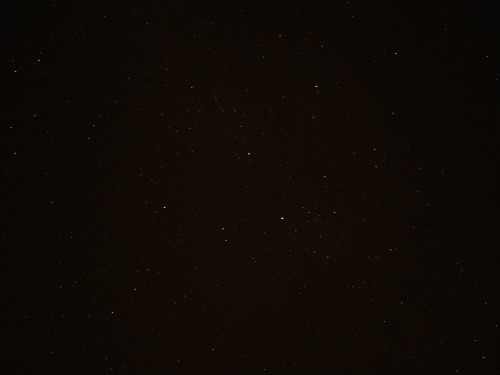



im very grateful for the lessons in photography i was taught in stop motion class because just now they made it possible to photograph the stars with my phone in spite of the camera usually not detecting the light of stars because theyre so dim,,,, enjoy these shiny motherfuckers
If Earth had Saturn’s Rings
From an excellent post by Jason Davis
From Washington, D.C., the rings would only fill a portion of the sky, but appear striking nonetheless. Here, we see them at sunrise.

From Guatemala, only 14 degrees above the equator, the rings would begin to stretch across the horizon. Their reflected light would make the moon much brighter.

From Earth’s equator, Saturn’s rings would be viewed edge-on, appearing as a thin, bright line bisecting the sky.

At the March and September equinoxes, the Sun would be positioned directly over the rings, casting a dramatic shadow at the equator.

At midnight at the Tropic of Capricorn, which sits at 23 degrees south latitude, the Earth casts a shadow over the middle of the rings, while the outer portions remain lit.

via x

Spacex promotional items
Falcon 9 patch
Pull tag before launch key ring
Mars text code
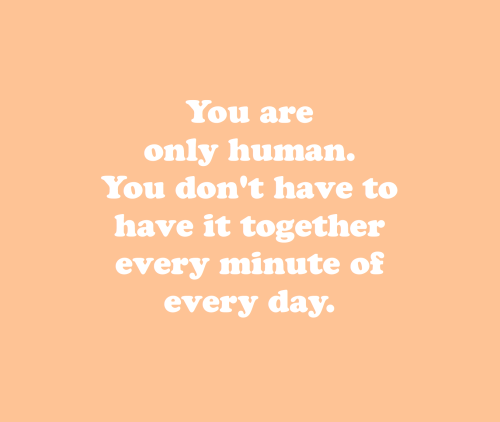
it’s okay to breakdown sometimes
Solar System: 10 Things to Know This Week
Every day, our spacecraft and people are exploring the solar system. Both the public and the private sectors are contributing to the quest. For example, here are ten things happening just this week:
1. We deliver.

The commercial space company Orbital ATK is targeting Saturday, Nov. 11 for the launch of its Cygnus spacecraft on an Antares rocket from Wallops Flight Facility in Wallops Island, Virginia. Cygnus is launching on a resupply mission to the International Space Station, carrying cargo and scientific experiments to the six people currently living on the microgravity laboratory.
2. See for yourself.

Social media users are invited to register to attend another launch in person, this one of a SpaceX Falcon 9 rocket carrying the Dragon spacecraft from Cape Canaveral Air Force Station in Florida. This launch, currently targeted for no earlier than December, will be the next commercial cargo resupply mission to the International Space Station. The deadline to apply is Nov. 7. Apply HERE.
3. Who doesn’t like to gaze at the Moon?

Our Lunar Reconnaissance Orbiter (LRO) sure does—and from very close range. This robotic spacecraft has been orbiting Earth’s companion since 2009, returning views of the lunar surface that are so sharp they show the footpaths made by Apollo astronauts. Learn more about LRO and the entire history of lunar exploration at NASA’s newly-updated, expanded Moon site: moon.nasa.gov
4. Meanwhile at Mars…

Another sharp-eyed robotic spacecraft has just delivered a fresh batch of equally detailed images. Our Mars Reconnaissance Orbiter (MRO) surveys the Red Planet’s surface daily, and you can see the very latest pictures of those exotic landscapes HERE. We currently operate five—count ‘em, five—active missions at Mars, with another (the InSight lander) launching next year. Track them all at: mars.nasa.gov.
5. Always curious.

One of those missions is the Curiosity rover. It’s currently climbing a rocky highland dubbed Vera Rubin Ridge, turning its full array of instruments on the intriguing geology there. Using those instruments, Curiosity can see things you and I can’t.
6. A new Dawn.

Our voyage to the asteroid belt has a new lease on life. The Dawn spacecraft recently received a mission extension to continue exploring the dwarf planet Ceres. This is exciting because minerals containing water are widespread on Ceres, suggesting it may have had a global ocean in the past. What became of that ocean? Could Ceres still have liquid today? Ongoing studies from Dawn could shed light on these questions.
7. There are eyes everywhere.

When our Mars Pathfinder touched down in 1997, it had five cameras: two on a mast that popped up from the lander, and three on the rover, Sojourner. Since then, photo sensors that were improved by the space program have shrunk in size, increased in quality and are now carried in every cellphone. That same evolution has returned to space. Our Mars 2020 mission will have more “eyes” than any rover before it: a grand total of 23, to create sweeping panoramas, reveal obstacles, study the atmosphere, and assist science instruments.
8. Voyage to a hidden ocean.

One of the most intriguing destinations in the solar system is Jupiter’s moon Europa, which hides a global ocean of liquid water beneath its icy shell. Our Europa Clipper mission sets sail in the 2020s to take a closer look than we’ve ever had before. You can explore Europa, too: europa.nasa.gov
9. Flight of the mockingbird.

On Nov. 10, the main belt asteroid 19482 Harperlee, named for the legendary author of To Kill a Mockingbird, makes its closest approach to Earth during the asteroid’s orbit around the Sun. Details HERE. Learn more about asteroids HERE. Meanwhile, our OSIRIS-REx mission is now cruising toward another tiny, rocky world called Bennu.
10. What else is up this month?
For sky watchers, there will be a pre-dawn pairing of Jupiter and Venus, the Moon will shine near some star clusters, and there will be meteor activity all month long. Catch our monthly video blog for stargazers HERE.
Make sure to follow us on Tumblr for your regular dose of space: http://nasa.tumblr.com.

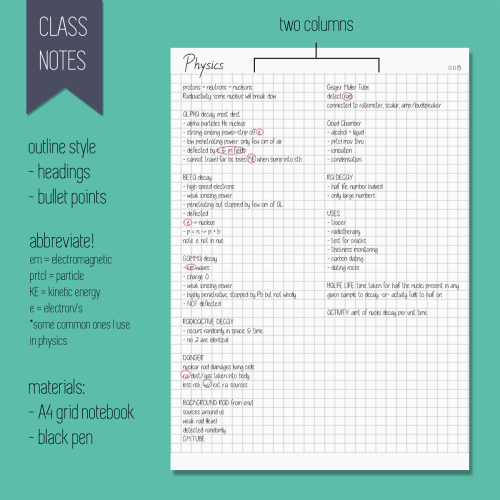
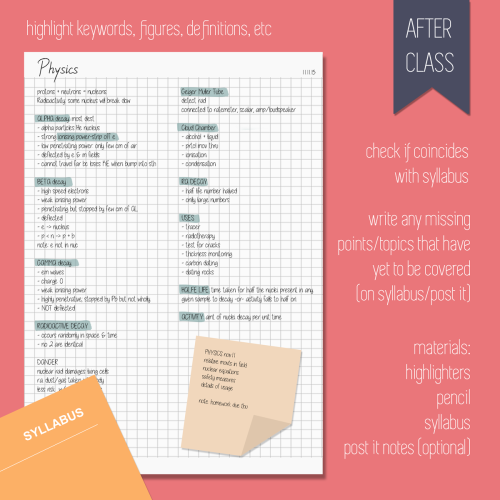
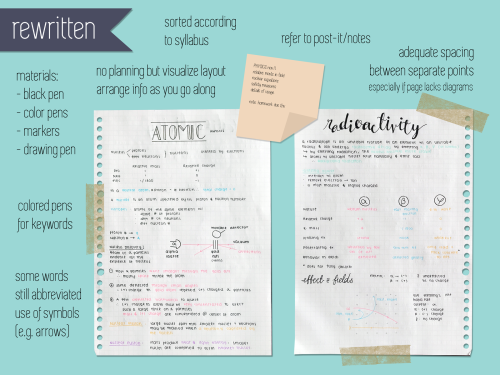
Note-Taking
Hey guys! So I’ve been receiving questions regarding my note-taking style and strategy for quite some time now but I believe I have never answered them in detail. The good news is, I finally decided to make a post about this (plus, I had fun making the graphics :D). Note that I am a visual learner, so my note-taking methods may not be effective for some of you, but I hope you can all learn something.
Class Notes
I only use one notebook for all my class notes, an A4 grid notebook whose pages I divide into two columns.
I use the outline method for in-class notes, which means I write information chronologically, in the order that they are taught. Some teachers do not have properly structured presentations/lessons (good thing my physics teacher does) so when in need, I use arrows to connect related information.
Abbreviations to me are one of the most important things to master when taking notes. I personally make them up as I go along. Some examples of abbreviations I use are:
w/c - which
w/ - with
cpd - compound
envt - environment
digenz - digestive enzyme
It might be confusing, but to me, knowing the context and part of speech are enough for all abbreviations to be comprehended.
Here’s an example: ‘Indonesia’s tsunami pre-warning system is made up of two types of components’ could become ‘Indo’s snmi pre-warn sys 2 type comp’.
After Class
The first thing I would do is highlight keywords and terminology (and sometimes formulas). For physics, since my teacher is relatively succinct, I don’t really highlight, but for humanities and biology, I look for words that would be expected by a mark scheme, words that are crucial to the understanding of each particular piece of information.
I would then check if the material taught coincides with the syllabus, and if not, note down any points that are missing or have yet to be taught. You could write these on a post it or on the syllabus itself, but I prefer to highlight the syllabus’ pdf file.
Rewritten Notes
My rewritten notes are arranged based on the order they appear in the syllabus unless there are pieces of information that are related to more than one topic.
I use a black pen for rewriting notes as well as colored pens to write keywords and terminology only. I know some people who write whole sentences in colored pens but to me that is ineffective; we all have our own learning styles. When making tables, I usually use different colors for different columns (see the table for different types of radiation above) which is most often the color I associate with each word. For example, water would be blue, ocean would be a darker shade, ice would be a lighter shade, and water vapor would be purple.
I still abbreviate words in my rewritten notes, but they’re not as condensed as the ones in my class notes. Another thing I find helpful is leaving a bit of space between separate points especially if the page doesn’t have a lot of diagrams. I can’t think linearly, so I can’t remember super lengthy bullet points.
I use mildliners and a drawing pen to make my diagrams (more of these in my biology notes) but I only start with pencil if it’s a complex diagram. I rarely highlight my rewritten notes, but even if I do, it’s usually only the headings and formulas.
I don’t have a rough draft for my notes, but I try to visualize the layout. I try to alternate between words and pictures/diagrams so that when I’m sitting for an exam, all I have to do is imagine that I’m looking at that page and I can remember where everything is.
Well, that’s all from me. I hope that this information could be of some use to every single one of you. Don’t hesitate to ask me questions if you’re confused about note-taking or any other problems you might have :)
I know some of y'all aren’t ok but still gotta study for their stuff so
Its ok, just take it easy my friend.Take a min when you need one. Don’t forget to rest. No pushing yourself too hard, you are already proving that you are trying your best by still studying. 😊
And take care of yourself, boo.💟
math aid
OK SO in the days leading up to the biggest maths exam I’ve ever written (also my 4th last one ever ) i’ve found this website. now, symbolab is different to mathaway and wolfram alpha (which are both great!) in that it shows you all the steps and it doesn’t do that thing where it’s “free” but if you want the explanation you have to sign up and pay. it’s AMAZING. know why?

it does everything. not baby everything, but everything. Calculus?

what’re you looking for?
also, the interface is really easy to use, and it’s set out so well.

the website is https://www.symbolab.com and you will not be disappointed.
-
 ikariawariootia reblogged this · 4 years ago
ikariawariootia reblogged this · 4 years ago -
 ikariawariootia liked this · 4 years ago
ikariawariootia liked this · 4 years ago -
 idazaejrob reblogged this · 5 years ago
idazaejrob reblogged this · 5 years ago -
 le92mars liked this · 5 years ago
le92mars liked this · 5 years ago -
 hellojustfortestuniverse liked this · 5 years ago
hellojustfortestuniverse liked this · 5 years ago -
 dasdritteauge reblogged this · 5 years ago
dasdritteauge reblogged this · 5 years ago -
 osakaso reblogged this · 6 years ago
osakaso reblogged this · 6 years ago -
 triplebb liked this · 6 years ago
triplebb liked this · 6 years ago -
 blueferrett liked this · 6 years ago
blueferrett liked this · 6 years ago -
 maxx85 reblogged this · 6 years ago
maxx85 reblogged this · 6 years ago -
 scorpin312 liked this · 6 years ago
scorpin312 liked this · 6 years ago -
 adriandromeda-blog liked this · 6 years ago
adriandromeda-blog liked this · 6 years ago -
 snakedoctor58 liked this · 6 years ago
snakedoctor58 liked this · 6 years ago -
 cetaceous liked this · 6 years ago
cetaceous liked this · 6 years ago -
 1969aerospace reblogged this · 6 years ago
1969aerospace reblogged this · 6 years ago -
 jbrackettssa liked this · 7 years ago
jbrackettssa liked this · 7 years ago -
 watcherthings liked this · 7 years ago
watcherthings liked this · 7 years ago -
 ecodj liked this · 7 years ago
ecodj liked this · 7 years ago -
 divermarv liked this · 7 years ago
divermarv liked this · 7 years ago -
 starhasarrived reblogged this · 7 years ago
starhasarrived reblogged this · 7 years ago -
 starhasarrived liked this · 7 years ago
starhasarrived liked this · 7 years ago -
 thatbkid reblogged this · 7 years ago
thatbkid reblogged this · 7 years ago -
 thatbkid liked this · 7 years ago
thatbkid liked this · 7 years ago -
 renniejoy reblogged this · 7 years ago
renniejoy reblogged this · 7 years ago -
 renniejoy liked this · 7 years ago
renniejoy liked this · 7 years ago -
 slickbrownfox liked this · 7 years ago
slickbrownfox liked this · 7 years ago -
 zemalia reblogged this · 7 years ago
zemalia reblogged this · 7 years ago -
 corrup reblogged this · 7 years ago
corrup reblogged this · 7 years ago -
 zerbyone reblogged this · 7 years ago
zerbyone reblogged this · 7 years ago -
 northwestphotag1 liked this · 7 years ago
northwestphotag1 liked this · 7 years ago -
 hungry-pilot liked this · 7 years ago
hungry-pilot liked this · 7 years ago -
 yu-yaaa reblogged this · 7 years ago
yu-yaaa reblogged this · 7 years ago -
 the-binary-tomorrow liked this · 7 years ago
the-binary-tomorrow liked this · 7 years ago -
 negamoonreactorcore liked this · 7 years ago
negamoonreactorcore liked this · 7 years ago -
 destopia liked this · 7 years ago
destopia liked this · 7 years ago -
 justanoldfashiontumblog liked this · 7 years ago
justanoldfashiontumblog liked this · 7 years ago -
 catshapeddarkness liked this · 7 years ago
catshapeddarkness liked this · 7 years ago -
 frscotty-blog liked this · 7 years ago
frscotty-blog liked this · 7 years ago -
 theheulwen reblogged this · 7 years ago
theheulwen reblogged this · 7 years ago